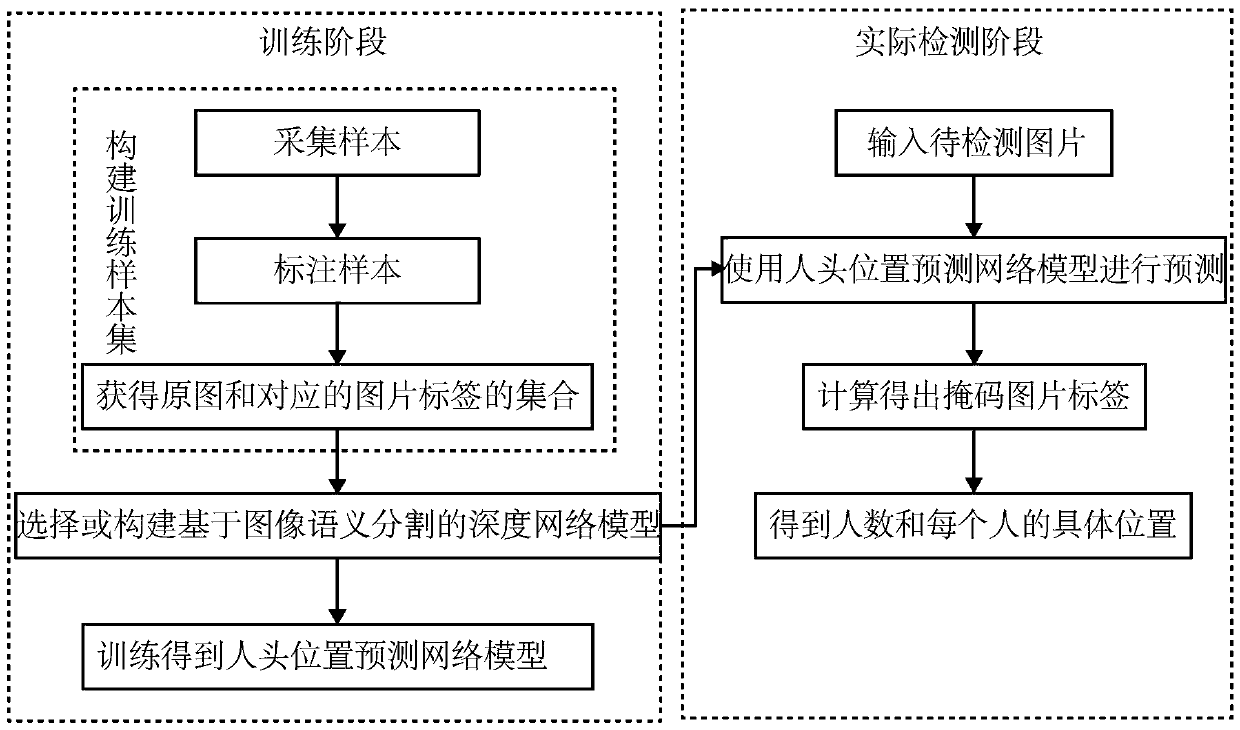Number-of-people estimation method based on deep learning semantic image segmentation
A semantic segmentation and deep learning technology, applied in the fields of image processing and computer vision, can solve the problems of inaccurate estimation results, inability to estimate the number of pedestrians, errors, etc., and achieve good prediction results
- Summary
- Abstract
- Description
- Claims
- Application Information
AI Technical Summary
Problems solved by technology
Method used
Image
Examples
Embodiment Construction
[0022] In order to facilitate the understanding of the present invention, the relevant background knowledge of image segmentation is firstly introduced. In the field of computer vision, image segmentation (Image Segmentation) refers to the process of subdividing a digital image into multiple image sub-regions (that is, a collection of pixels, also known as superpixels). The purpose of image segmentation is to simplify or change the representation of the image, making the image easier to understand and analyze. Image Semantic Segmentation (Image Semantic Segmentation) combines the two tasks of traditional image segmentation and target recognition, divides the image into a set of blocks with certain semantic meaning, and recognizes the category of each segmented block, and finally obtains a picture with pixel-by-pixel Semantically annotated images. At present, image semantic segmentation is a very active research direction in the field of computer vision and pattern recognition...
PUM
 Login to View More
Login to View More Abstract
Description
Claims
Application Information
 Login to View More
Login to View More - R&D
- Intellectual Property
- Life Sciences
- Materials
- Tech Scout
- Unparalleled Data Quality
- Higher Quality Content
- 60% Fewer Hallucinations
Browse by: Latest US Patents, China's latest patents, Technical Efficacy Thesaurus, Application Domain, Technology Topic, Popular Technical Reports.
© 2025 PatSnap. All rights reserved.Legal|Privacy policy|Modern Slavery Act Transparency Statement|Sitemap|About US| Contact US: help@patsnap.com



